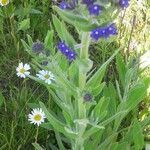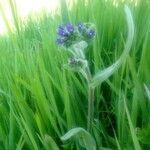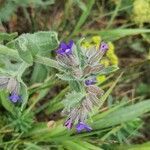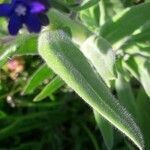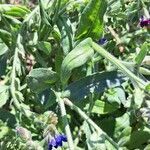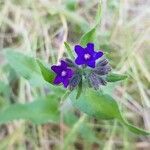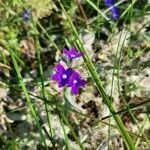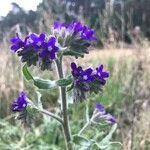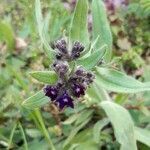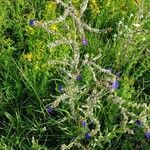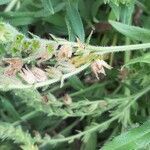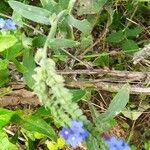A medium sized herb. It is rough and bristly and keeps growing from year to year. The stems are erect and branched. The leaves are long and sword shaped. They are 10-20 mm wide. The lower leaves have stalks. The flowers are bluish-red or violet. They have a white centre. They are 7-15 mm across. They are in long coiled cymes. The fruit are cone shaped small nuts.
